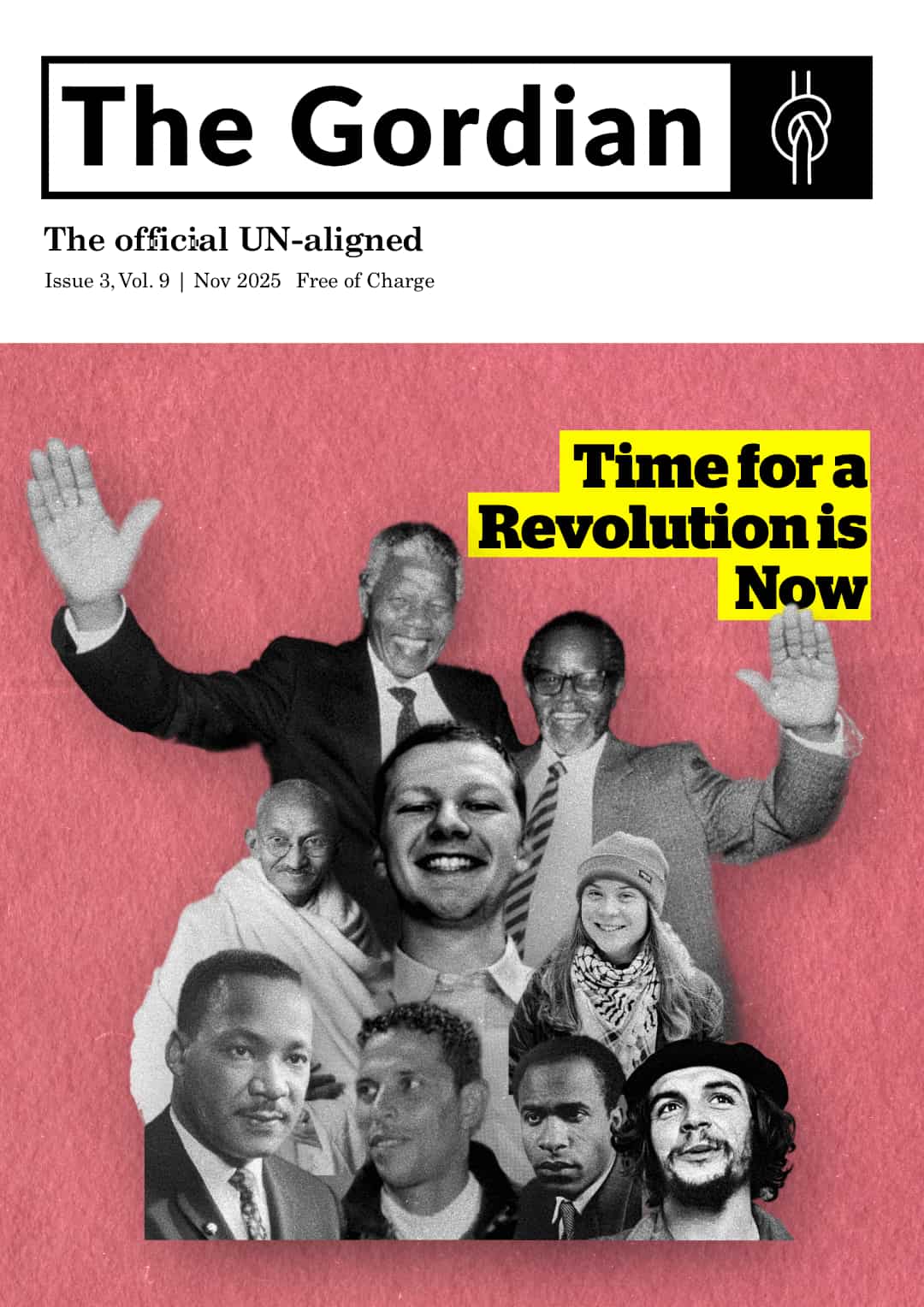Federalism & Social Cohesion
In this issue of The Gordian, we take a closer look at the Balkan Peninsula and the fall of the Socialist Federal Republic of Yugoslavia. This issue contains exclusive reports by, our literary editor, Alex Liberto, and other UN-aligned members, namely Jay Davis and Carla Pietrobattista, Eston McKeague, Jonna Lappalainen and Aryan Yekrangi. The editors are Adrian Liberto and Ariana Yekrangi.
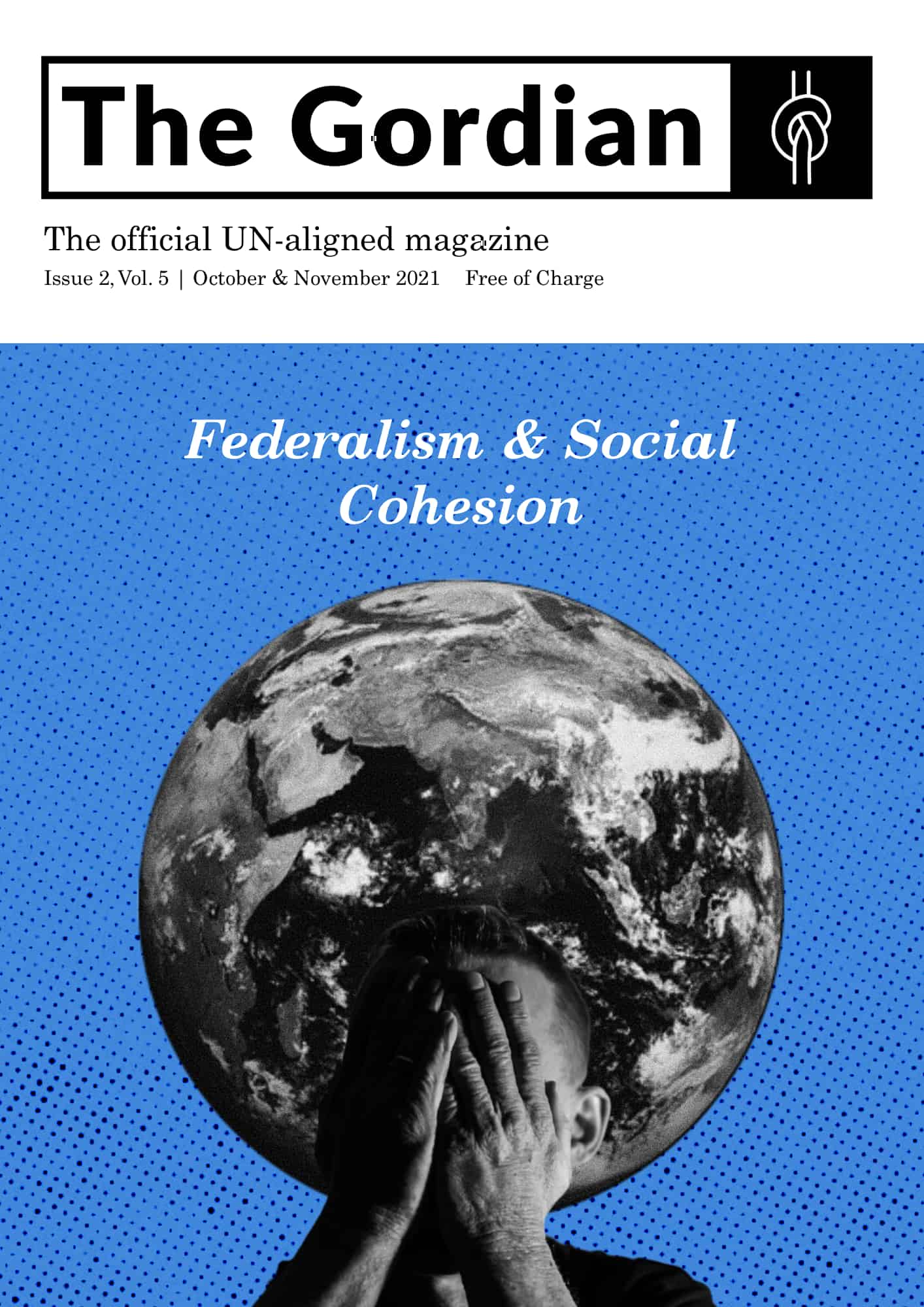

“Terra Australis Incognita” & “Silence” chosen as the winners of the 2021 UN-aligned poetry competition
It is with great pleasure to announce the winners of this year’s poetry competition arranged by UN-aligned. This year, we have received 17 poems that creatively portrayed the values that UN-aligned’s Manifesto campaigns for.
- The first place goes to Dean Gessie from Canada for his poem “Terra Australis Incognita”.
- And the second place goes to Ayesha Kajee from South Africa for her poem “Silence”.
The selection in the call for works was made by UN-aligned’s literary editor and winner of the international ‘Il Leone D’Oro’ award, Alex Liberto.
Considering there were numerous fantastic works by other UN-aligned members across the world, we have decided to award other participants with extra attention and publish a selection of their works within a new series in the Gordian magazine titled “Poems for a Better World”.
We are also planning to conduct interviews with these writers about their creative journey and ideas for a better and brighter future, so please stay tuned for those.
Congratulations to our winners and many thanks to all entrants for participating. We hope you consider UN-aligned a home for your poems and ideas for a better world.
Interview with Dean Gessie about his poem Terra Australis Incognita
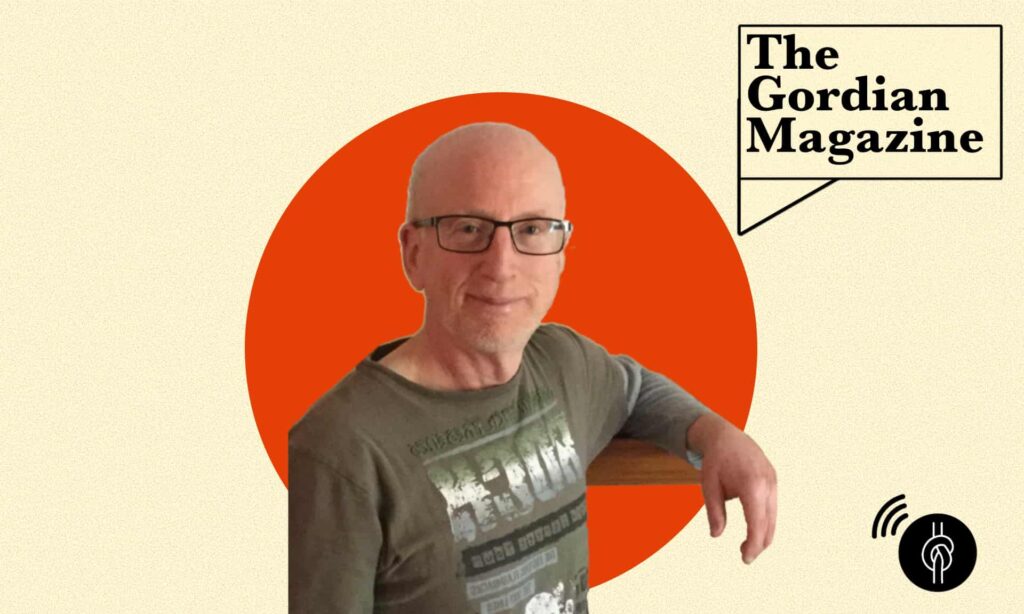
and those black fellas believed these white fellas spirits of their ancestors (pale time travellers of everywhen) and those black fellas received venereal, opium, rum and pox and they returned witchetty grubs, honey ants and fruit bats and the white fellas killed no one with their guns because the new land was called terra nullius (land belonging to no one) and it was fair to say that these white fellas did not include themselves nor irony in their census taking and the captain struck the collarbone of the elder (he that had helped himself to the white fellas shovel) and the aborigine elder embraced the captain and spread his arm to indicate everything he could see and the captain surrendered his shovel of wrought iron just as black fellas shared their axes of polished greenstone and so it was with ropes and stakes and sacred land; these white fellas pushed the black fellas further from the sea, scattered burial totems of coral, red basket and seagull feather and there was bile and spleen between the groups and dead black fellas (females and young, too) and the aborigine elder pushed the collarbone of the captain and the captain knew it was wrong to survey and deed what wasn’t theirs and he was ashamed and he agreed that his voice was no greater than the magpie or the blue winged kookaburra and he negotiated to settle the interior space of terra nullius (that ground that was less hospitable like them) and handcuffs and leg irons fell from the poors and politicals and these made a mountain of metal where everyone was free to piss and the captain cast off his blue jacket and white waistcoat and humbled himself to learn yellomundi (or storyteller) and butbut (or heart) and he was granted initiation by they that met and decided he was ten years old and he was painted with red clay and fat of the wallroo and wombat and he received cuts to his chest arms shoulders and buttocks and sand in each produced voluminous scars and the penis of this white fella was split with a stone knife and a front tooth was knocked out to mark him as community and he danced the tree lion climbing ripping and pulling but laying in peace with brother and sister alike and he sang the songlines that trek creation and he blew didjerry didjerry through termite eucalyptus, pressed his lips to beeswax and shook out grins and guffaws and the black fellas did not call him apostle but he returned his blind eye seeing to the white sails of sirius of the orion and he stayed the cannons and six-pounder guns and his voice was dreamtime and ancestral beings and why it is that men and women walk upright and those that saw and heard were ashamed and they pushed the collarbone one of the other and they agreed against greed to call this place “must be there somewhere land” and it remains so to this day
Interview with Ayesha Kajee about her poem Silence
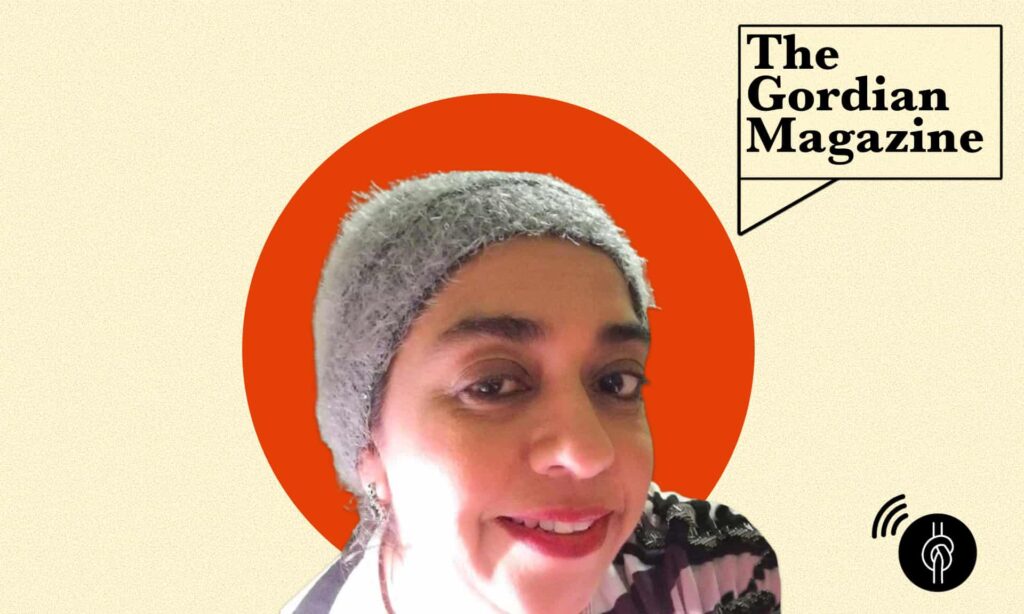
i
Silence is explicit
Silence is complicit
Complicity is violence
So in the violence of our silence
Let us take stock of our complicity
ii
Our complicity silences truth
Muffles honour, rapes innocence
The same innocence we plead
Confronted by shattered delusion
“We didn’t know”
iii
We wished to not know
Blinded, deafened, deadened
We turned away Bedecked ourselves in laurel
Which now turns to rue
iv
Our silence - yours and mine - is explicit
It is complicit It is violent
And in its complicit explicit violence
We too have bloodied our souls
- Silence was awarded the second place in the 2021 UN-aligned poetry competition.
Join the campaign to save cruelty-free cosmetics
By Jonna Lappalainen
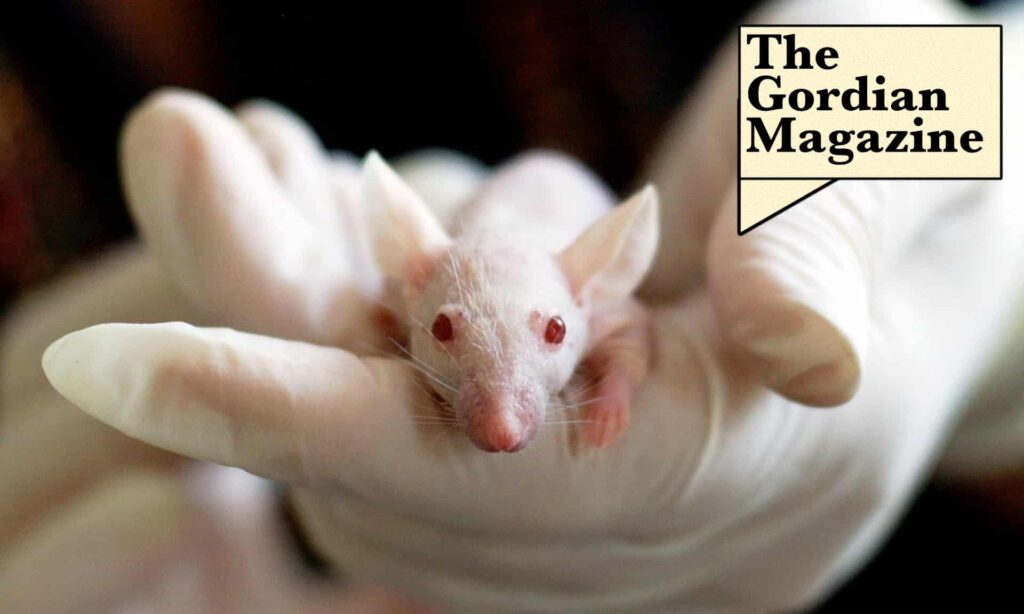
EU’s ban on animal testing for cosmetics is under threath as new analysis finds that cosmetics sold in the EU and UK contain chemicals tested on animals. Furthermore, the European Chemicals Agency (ECHA) is requesting new animal tests on ingredients that have been used in cosmetics safely for years.
More than 400 animal rights organizations and companies, including PETA, The Body Shop, Dove and it´s parent company Unilever have signed and sent an open letter to the Presidents of the European Commission, the Parliament and the Council to fully commit to the EU-regulation and continue with its course for a global ban by 2023.
Why is the campaign needed?
EU cosmetic ingredients are ruled by two conflicting regulations: The Cosmetics Regulation that fully prohibits the testing of cosmetic products or their ingredients, and the REACH that strives to ensure human health and protect the environment.
A recent case involving the German chemical company Symrise illustrates the incongruity of these two regulations. ECHA, which evaluates the data of toxicity and workers’ safety according to the REACH regulation, ordered Symrise to conduct animal tests on two ingredients used for cosmetics only, and rejected the alternative non-animal testing methods Symras proposed.
In other words, what could happen is that an ingredient could be banned from animal testing according to the cosmetics regulation but needs to be tested on animals to fulfill the requirements of the REACH. ECHA among other environmental groups argue that while their goal is to reduce the usage of animal tests as much as possible, the alternatives (non-animal testing methods) are not yet safe and reliable enough to ban all animal tests.
Give your support
On 15th September 2021, the European Parliament voted in favor of a resolution that demands an EU-wide action plan to end the use of animals in testing and research. It also calls for sufficient fundings for developing non-animal testing methods further. Give your support for cruelty-free cosmetics in the EU and join PETA and others by signing the European citizens’ initiative.
Read more about EU´s action plan to pave the way for a global animal testing ban and related information here:
Here’s everything you may have missed in October — The Gordian Monthly recap
By Ruby Goldenberg & Ariana Yekrangi
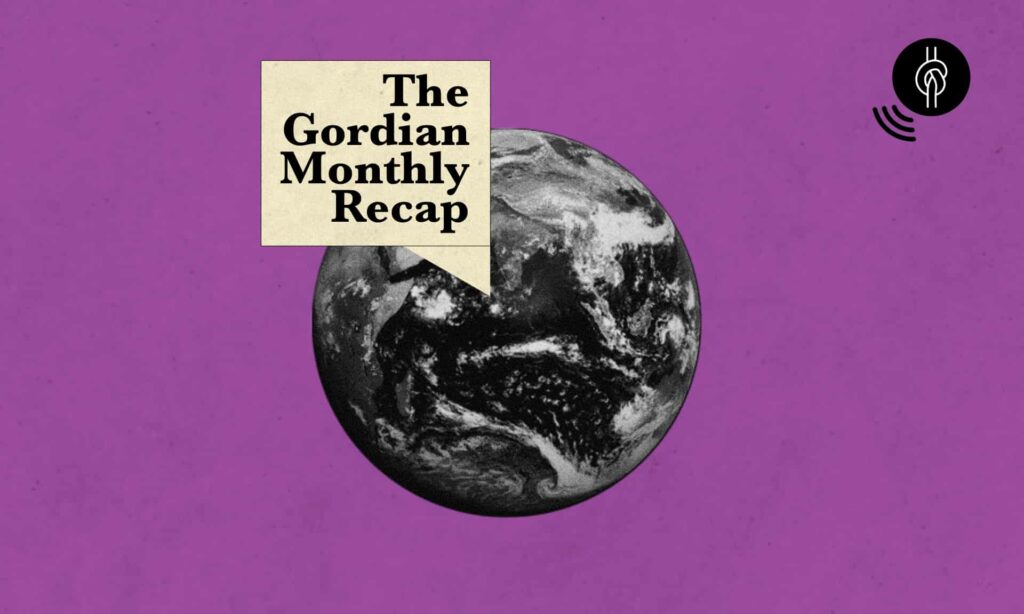
In this episode of Gordian Monthly Recap, Ruby Goldenberg and Ariana Yekrangi help you catch up with everything that happened in October 2021.
Yugoslavia’s Failed Social Contract: Lessons Worth Learning
By Adrian Liberto
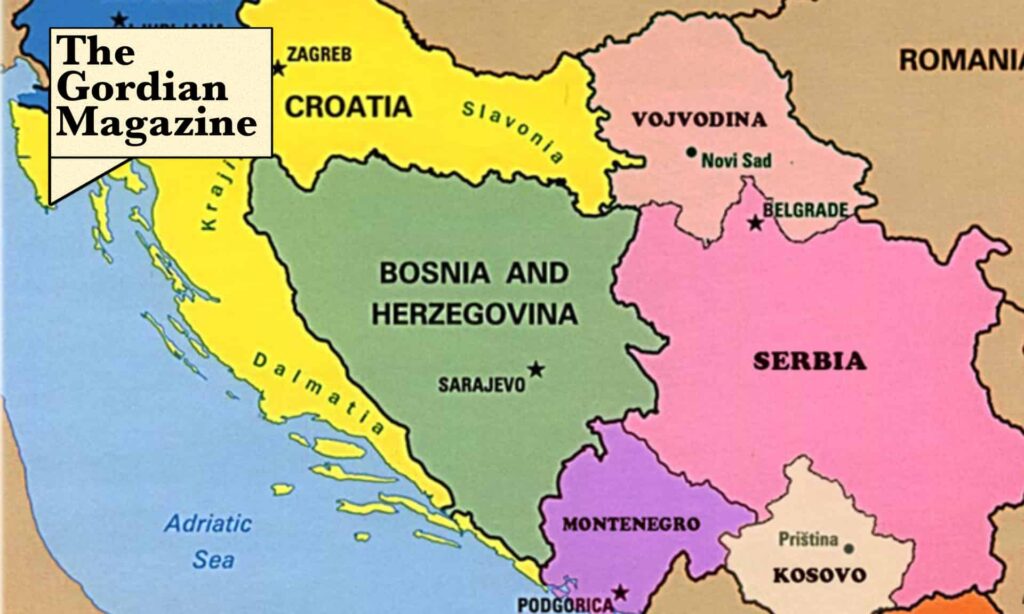
When federalism is not enough
When the Socialist Federal Republic of Yugoslavia (SFR Yugoslavia, or simply Yugoslavia) fell apart in the early 1990s, its ruins bred unimaginable chaos and destruction. Even though the founding of the federation dated back to anti-Fascist resistance following the occupation of the Kingdom of Yugoslavia by the Axis powers in 1941, the Kingdom itself had been a precursor to the entity since the end of WWI. In the light of this common history and the predominantly Slavic ancestry, the bloodbath that followed, which dragged on for a decade (1991-2001), seems all the more outrageous.
Moreover, the Balkan Peninsula is nestled comfortably within modern Europe: hardly a setting for genocide, massacres and wonton destruction; and yet, that is exactly what happened. So much for the “social contract” that kept it together. As soon as the opportunity arose, people turned against each other with such merciless bloodlust, that the consequences of the violence are still being felt today.
Yugoslavia can serve as a case study for the frailty of institutions, when these are not founded on understanding and respect. “My territory is better than yours!” “My dialect is better than yours!” “My religion is better than yours!” “My blood is better than yours!”
And so it begins… A federation founded on this sort of mentality is doomed, as the breakup of Yugoslavia made abundantly clear. Religion played a big part, as it often does, with Orthodox Christians (predominantly Serbs), Catholics (predominantly Croats) and Muslims (predominantly Bosniaks) demarking their battlelines. I have written about the Srebrenica genocide in my recent book ‘Unravelling the United Nations’, but that was just one of the many atrocities that defined the Yugoslav Wars.
Twenty years seems like a long time, but as I toured the region this October, the signs of the struggle were still all too visible: bullet-ridden buildings, youth-filled cemeteries and neatly restored landmarks not quite managing to portray convincing authenticity. A tour guide from Croatia told me that last year was the first year that she had a Serbian on her tour, while a young historian from Herzegovina pointed out that as he grew up, almost every building in his town was scarred by the war. I couldn’t help feeling that the people were too.
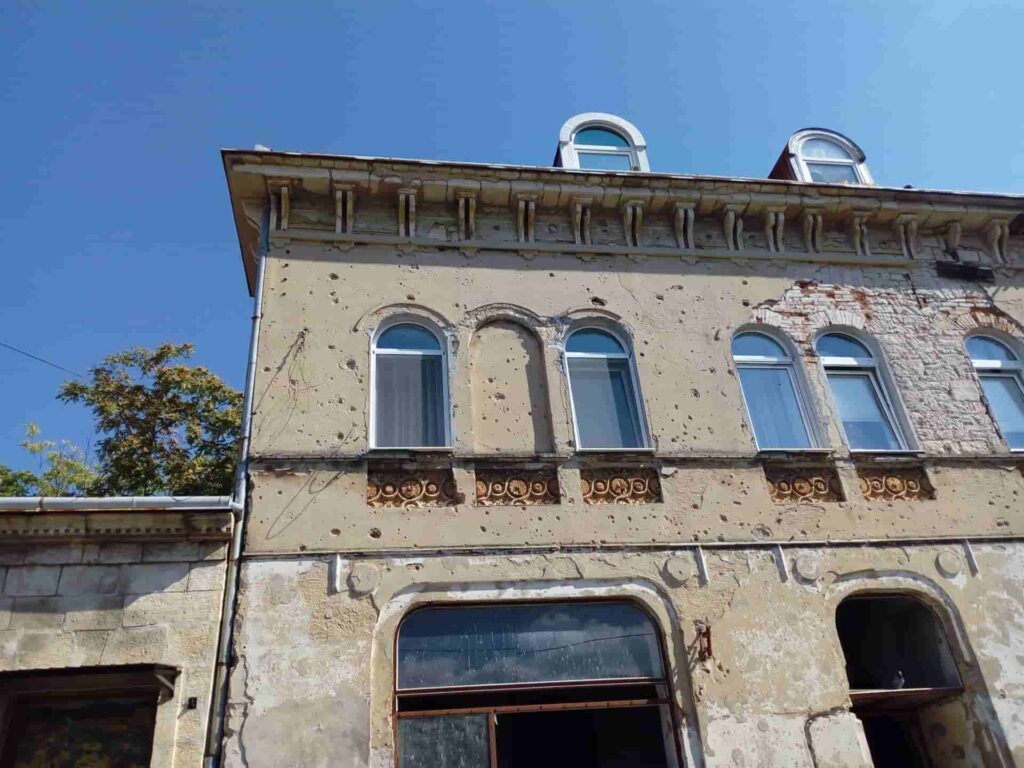
Though the hub of the historical centre of Mostar was added to UNESCO World Heritage list in 2005, the spectre of war still looms over the city.
Tito was not enough
It would be tempting, but naïve, to blame Tito (1892-1980) for the problems by suggesting that he had kept such a tight lid on the festering resentment, that it was bound to explode once he was no longer there to manage it. Tito was indeed a strongman, but a fairly enlightened one. Apart from being a hero of the resistance during WWII, as leader of Yugoslavia he stood up to Stalin by keeping his country out of the despot’s sphere, while also dodging other superpowers by co-founding the Non-Aligned Movement in 1961.
Tito led Yugoslavia from 1944 until his death, both as Prime Minister (1944-1963) and as President (1953-1980). His brand of socialism included an economy that empowered workers to own and manage firms, as well as an openness to foreign visitors and trade. His decentralised policies left federated states with a high level of autonomy which included the right to secede from the union through legal channels if they chose to do so. His achievements were many and they were widely acknowledged, as is testified by his long list of international awards, which include the Légion d’honneur and the Order of the Bath.
In retrospect, however, something was clearly amiss. The end of the Soviet Union triggered a series of events that did not only lead to the fragmentation of the federation, but, as mentioned above, to internecine violence of monstrous proportions. Where did all the hatred come from and could it have been prevented?
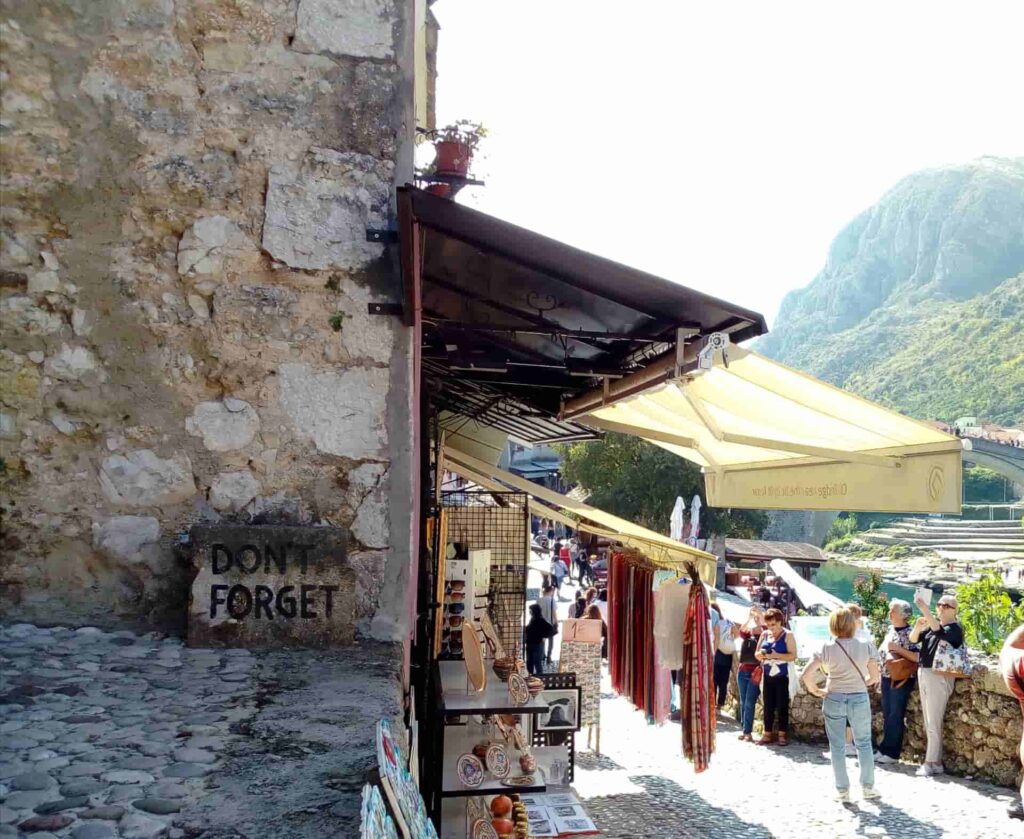
Mostar, Bosnia Herzegovina. Indeed, it would be rather difficult to forget! About 2,000 people died in Mostar during the conflict and the city is still divided along ethnic lines and plagued by political corruption.
Lessons worth learning
In hindsight, it is clear that sound mechanisms of governance are not enough. Imagine a society living with a technology that is so advanced that the slightest misdemeanour would be flagged up. If the penalties were inconvenient enough, people would soon surrender to the imperatives that would make them “good” law-abiding citizens. Should the technology break down, however, mayhem would soon follow.
Nothing can substitute understanding and when it comes to society, and understanding also means open-mindedness, respect, compassion and solidarity. Perhaps Tito’s mistake was that he trusted that the slow pace of evolution would lead people to do what is right. Sadly, when the breakdown came, many did not opt for what was right and many died as a consequence. Leading by example only works when those who are led are bright enough to appreciate the merits of the process and its consequences. Education and keeping people on board requires more effort.
Education, intimidation and brainwashing are very different things. Brainwashing is force-feeding a point of view while suppressing or manipulating the facts; whereas intimidation is pressuring people to follow a certain course because failure to do so would result in real (though orchestrated) or imagined dire consequences. Education, on the other hand, highlights facts, creativity, our shared humanity and harmony.
I am deliberately avoiding the word ‘tolerance’ here, not only because it tends to be condescending, but especially because it is limited, as though one is agreeing to put up with something or someone, knowing full well that often there are limits to how long that ‘putting up’ can last. Tolerance is a wall. That wall fell down around the federated states of Yugoslavia in the early 1990s and all hell was let loose. Yugoslavia taught us some valuable lessons, let us take heed.
The main lesson, then, is that a venture will be successful, in proportion to the genuine support it gets from the people concerned. As Lincoln said: “A house divided against itself cannot stand.” If it is a company working on a project, the team members need to feel a sense of ownership regarding the aims and processes involved. If it is a sports team, players need to be working collaboratively towards the same goal. If it is a political entity, the people need to be on board it if it is to work.
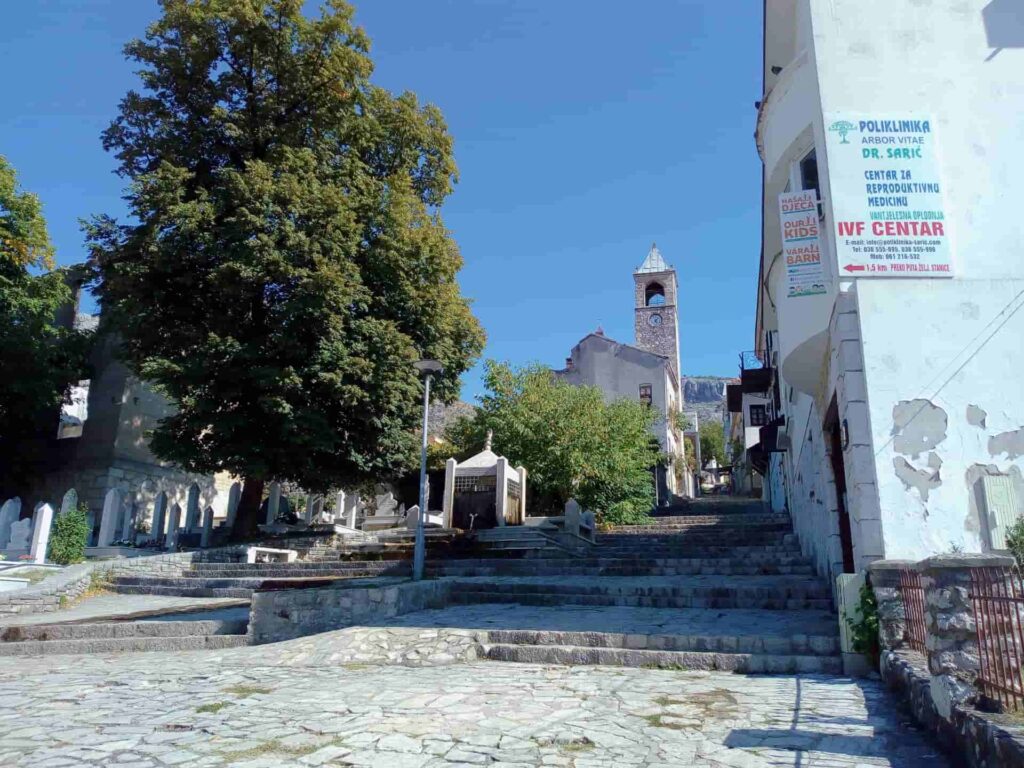
In 1994 the Washington Agreement led to a ceasefire in Mostar, but it was too late for many young men buried here whose tombstones bear the same date.
Herein lies the big dilemma: unlike employees in a company or the players in teams, who may have been carefully selected, people come in all sorts of ideological shapes and sizes. Many may be prone to hatred, violence, manipulation or apathy. Millions of people do not care about world peace, human rights, animal welfare or environmental protection. We cannot make them. What we can do is shout out the message, even if it is as a voice crying out in the desert.
Governments, however, are in a better position to be heard. They are in a better position to educate. Nevertheless, governments are also made up of people. It is therefore all the more imperative that those who do have insight speak up, whether they are at school like Greta Thunberg, or holding the highest office. Failure to speak out for justice when you know what justice is, is injustice.
There are no fences to sit on here because the consequences of inaction are too dire. Religious leaders are particularly powerful; they have a ready-made audience. Yet how many prioritise the real issues that affect people, animals and the globe over petty superstitions? Emphasise what divides us and one day it will rip us apart and rip us to shreds as it almost did in Yugoslavia.
So there is a lot of festering behind the scenes, we cannot be sure how much, but evil despots sense it, arouse it and use it. We should beat them to it and try to heal it. That is the education we need and the education we need to impart if we are to prevent further wars and bloodshed. It may seem like a losing battle, but only by fighting it can justice be won in the end.
Language to Unite, Language to Separate: The Tale of Serbian & Croatian
By Anonymous
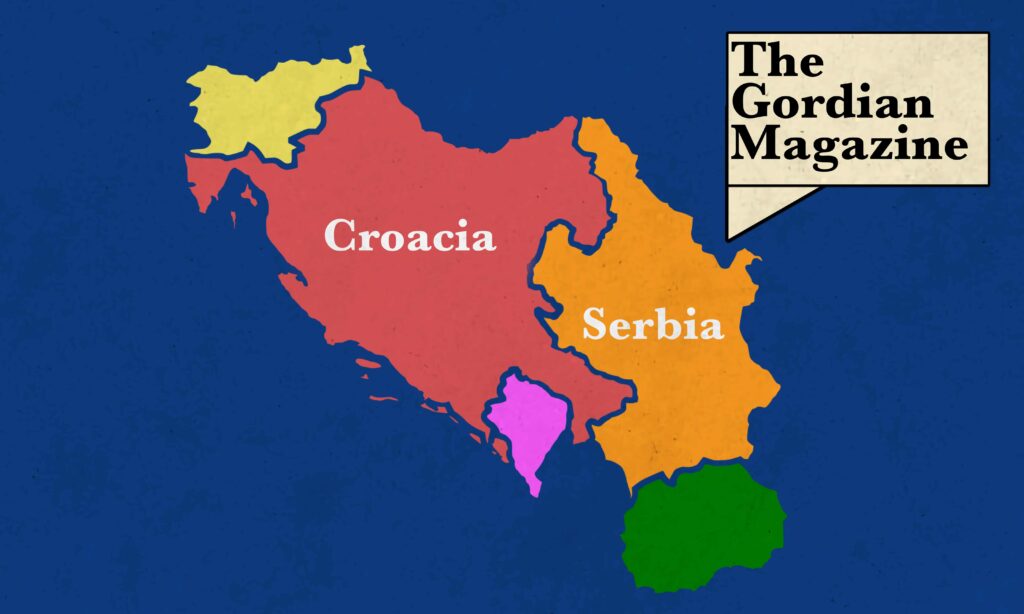
Croatia and Serbia, once brothers united, have experienced many conflicts since the collapse of Yugoslavia in 1991. In fact, conflicts existed even prior to the demolition of Yugoslavia and can even be traced back as a cause for its collapse. Thus, it is worth looking at the role of language in this conflict. More specifically, how the classification of two languages can be utilized as a tool, sometimes even a weapon. We do this by answering the following question: “Are Serbian and Croatian two different languages, or simply two dialects of the same language”?
Merriam Webster defines a dialect as “a regional variety of language distinguished by features of vocabulary, grammar, and pronunciation from other regional varieties and constituting together with them a single language.”
This definition distinguishes language and dialect in a hierarchical manner, where various dialects fall under a single language. This is a definition we will use for this passage, though other kinds of dialects also exist, such as social dialect. We will not concern ourselves with such dialects here.
Serbian and Croatian background
Both Serbian and Croatian are South Slavic languages. Other languages in this branch include Bulgarian, Slovene, and Macedonian. Prior to the breakup of Yugoslavia in 1990, the standard variety of language was referred to as Serbo-Croatian where two kinds of dialectal distinctions were made. The first distinction was according to the word for “what” (sto, ca, kaj) giving rise to the three variations Stokavian, Cakavian and Kajkavian. The second distinction was according to the pronunciation of the vowel /ɛ/ (similar to “bed” in English) separating the language into the three dialects Ekavian, Ikavian and Ijekavian. According to these two distinctions, standard Serbian falls under Stokavian – Ekavian, while standard Croatian falls under Stokavian – Ijekavian. (Smiljanic, 2013:16-17).
There are various factors that can be considered when analyzing whether two varieties are considered dialects of the same language, or two separate languages. In the following section we will discuss linguistic factors, mutual intelligibility, as well as social factors. We will also touch upon the concept of the continuum of dialects.
Linguistic factors
Linguistic factors include orthography (aspects related to how language is written), phonological features (aspects related to pronunciation), lexical features (aspects related to vocabulary), and grammatical features.
- Orthography: Serbian is written in the Cyrillic alphabet (Russian alphabet) and sometimes in the Latin alphabet (especially online). Croatian on the other hand utilizes the Roman alphabet exclusively.
- Phonological: Phonological differences between Serbian and Croatian are minimal. The main difference is the vowel /ɛ/ occurring as /ɛ/ in Serbian, while occurring as /jɛ/ in Croatian. (McLennan, 1996:106). There also exist prosodic differences, such as stress, between the two varieties, however these differences are minimal (Kovačić, 2005:197).
- Lexical: In regard to lexical aspects, Serbian and Croatian primarily differ in borrowed words from other languages. Due to historical and geographic reasons, the influence of Turkish and Greek is greater in Serbian, while the influence of German and Italian appear more dominantly in Croatian. In addition, there are slight differences in Slavic origin words (Kovačić, 2005:198-199).
- Grammatical: Serbian and Croatian are mostly the same in regard to grammar, with the exception of the use of infinitive forms in Serbian (infinitives are usually dictionary forms of verbs such as “read” in English or “leer” in Spanish). Direct use of infinitive forms are still seen in Serbian, while infinitives are close to non-existent in standard Croatian.
As can be seen above, there only exists slight linguistic differences between Serbian and Croatian. However, using linguistic factors on their own is unreliable as drawing boundaries is not simple and is often done in semi-arbitrary manners. Thus the measure of mutual intelligibility can be used to decide the language–dialect status of two varieties.
Mutual Intelligibility
Mutual intelligibility refers to the ability of speakers of two different varieties to understand each other without prior exposure or special efforts. This is a useful factor to consider, because logically if two variations are mutually unintelligible, they count towards different languages, however the opposite is not always true. In other words if two varieties are mutually intelligible, they cannot be said to necessarily belong to the same language. This is primarily due to mutual intelligibility thresholds. Some studies, such as Mair (1991) use a 50 percent threshold, meaning that if more than 50 percent of a conversation is understood by speakers of the two varieties, the two varieties count as mutually intelligible. This threshold is somewhat arbitrary, though higher percentage thresholds are not easily justifiable either. Fortunately for us, Serbian and Croatian are mutually intelligible, even with very high intelligibility thresholds.
The continuum of dialects
Continuum of dialects is a phenomenon concerning language and geographical location where, similar to a gradient, shifts in language occur slowly as we move from one point of the map to another. Linguistic differences between language varieties of two neighboring places (e.g. city or town) are often small. Furthermore, the varieties are generally mutually intelligible. However, the further away we move, the more different and the less mutually intelligible the varieties become. Additionally, there also exists variety in language within a single location (e.g. a city or town). Because of the continuum of dialects, drawing lines between varieties of a language is very difficult, whether it be geographic lines, or separation regarding to what dialect a variety belongs to. Thus, linguistic factors and mutual intelligibility are not enough to determine the status of two varieties and social factors need to be taken into consideration as well.
Social factors
According to Haugen (1966:922), studies show that the development of a dialect into a language is intimately related to the development of writing and the growth of nationalism. In fact, as mentioned by McLennan (1996:103), national identity and language are treated as being synonymous by many people. There are some systematic ways for considering social factors, one of which is Bell’s seven criteria for language (1976) which considers historical and political factors, language policy, as well as the opinion of speakers of the language(s). McLennan (1996, 107-108) uses these seven criteria to determine the status of Serbian and Croatian from a social point of view. McLennan concludes the following for each criteria (please refer to the original for a more in-depth analysis):
- Standardization: Each language has a separate standardized system, including orthography and spelling. (point for language)
- Vitality: Both varieties have living communities of speakers. (point for language)
- Historicity: Serbia and Croatia share a similar history, though small differences such as the effect of Ottoman empire on Serbia is brought up by Croats. (point for dialect)
- Autonomy: Croats feel they speak a different language, however Serbs believe Serbian and Croatian are varieties of the same language. (point for language)
- Reduction: Speakers of both varieties look down on the other variety. The same is true for dialects that share features with the opposite variety, for instance Croats look down upon dialects within Croatia that sound closer to Serbian, for instance due to vowel changes. (point for language)
- Mixture: Neither Serbians nor Croats feel like their language is impure or is a marginal variety of some other language. In fact, according to McLennan Croats often feel like Serbian is somewhat impure due to the influence of Turkish (point for language).
- Presence of De Facto Norms: Serbian and Croatian both have unofficial definitions of ‘good’ and ‘bad’ language usage. These definitions generally fall under self ‘good’ (e.g. Croatian good), other ‘bad’ (e.g. Serbian bad). This concept also extends within each variety, for instance dialects within Croatian are considered ‘bad’ if they share features with Serbian.
Based on the seven criteria for languages, McLennan concludes that from the point of view of the people involved (particularly Croats), Serbian and Croatian are two different languages.
Conclusion
In conclusion, determining whether two varieties are dialects of the same language or two independent languages requires an in depth analysis of linguistic and social factors, as well as considering their mutual intelligibility. Linguistic factors show only small differences between Serbian and Croatian and these varieties are also high in mutual intelligibility. Both of these indicate that Serbian and Croatian are dialects of the same language.
However, social factors show profoundly crucial differences between the users and their attitudes towards their own language (e.g. Croatian for Croats), as well as towards the counterpart language (e.g. Serbian for Croats). This strongly indicates that Serbian and Croatian are two independent languages.
At first glance we appear to have made no progress with the distinction of Serbian and Croatian, but this couldn’t be further from the truth. Our analysis crucially shows that when making linguistic comparisons, Serbian and Croatian can be viewed as dialects of the same language.
However, this does not have to hold true for social circumstances. Croatia is fighting a war for language independence, the same war that countries such as Pakistan (in regard to the Urdu – Hindi distinction) and Afghanistan (in regard to the Dari – Farsi distinction) have fought and still continue to fight.
For countries such as Croatia, Afghanistan, and Pakistan, declaring independence of language is a big step towards declaring political independence. It is used as a tool to become autonomous, as a weapon to protect their social identity. Even though these claims do not have roots in linguistic factors, sociolinguistic analysis shows there is a clear need for the classification of Serbian and Croatian as two different languages.
References:
Haugen, E. (1966). Dialect, Language, Nation 1. American anthropologist, 68(4), 922-935.
Kovačić, M. (2005). Serbian and Croatian: One language or languages?. Jezikoslovlje, 6(2), 195-204.
Mair, V. H. (1991). What is a Chinese" dialect/topolect"?: Reflections on some key Sino-English linguistic terms. Philadelphia: Department of Oriental Studies, University of Pennsylvania.
May, G. J. (2007). A comparison of the attitudes of Hong Kongers and Mainland Chinese towards the status of Cantonese: Language or Dialect-or Topolect?.
McLennan, S. (1996). Sociolinguistic analysis of Serbo-Croatian'.
Sipka, D. (2007). Bosnian, Croatian, Serbian. A Grammar with Sociolinguistic Commentary/Bosnian, Croatian, Serbian. A Textbook with Exercises and Basic Grammar. Canadian Slavonic Papers, 49(3/4), 393.
Smiljanic, R. (2013). Lexical, pragmatic, and positional effects on prosody in two dialects of Croatian and Serbian: An acoustic study. Routledge.
SDG 16: “People who live in glass houses shouldn’t throw stones”
By Jay Davis
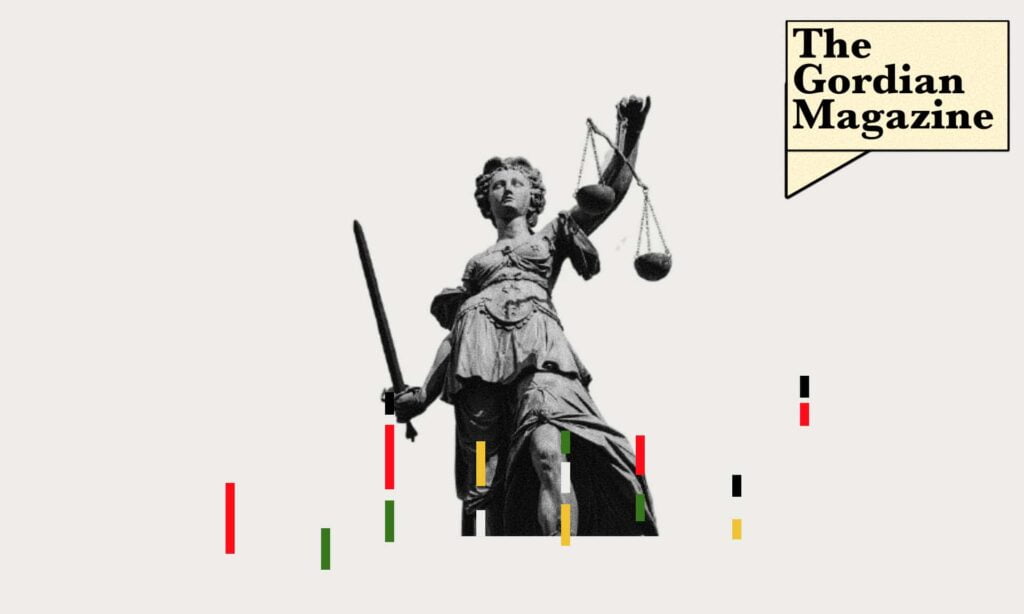
Peace, Justice and Strong Institutions are three fundamental facets of any progressive civil society in the 21st century. Therefore, as the UN is in many senses the world’s guardian, one of its utmost duties is to promote, instil and maintain these components globally to ensure collective harmony.
In 2015 – and since the UN’s conception – promoting peace, justice and strong institutions has been at the forefront of the UN’s agenda. This is evident with UN member states dedicating an entire Sustainable Development Goal (SDG) towards this pledge, which will see these beliefs transformed into formal and legitimate processes worldwide by 2030.
Yet, there are a multitude of pressures which are threatening to disrupt the UN’s progress towards this ambitious goal. With some of the most salient being; rife right-wing populism, the COVID-19 pandemic, international and regional conflicts, record-breaking poverty, an escalating climate crisis and the UN’s hypocrisy in promoting these tenets due to its power imbalances, unaccountability, opaqueness and archaic bureaucratic structures.
The purpose of this article is to ascertain whether the UN is making progress towards SDG 16 amidst these challenges and conclude whether the UN is best placed to be promoting these beliefs. If not, what should be replacing it?
SDG 16 Targets
The UN explains ‘Goal 16 of the SDG is dedicated to the promotion of peaceful and inclusive societies for sustainable development, the provision of access to justice for all, and building effective, accountable institutions at all levels.’ The UN has defined 12 Targets and 23 Indicators to track the progress of SDG 16 which can be identified here.
Progression or Regression?
Target 16.1
This target’s primary focus is to ‘significantly reduce all forms of violence and related death rates everywhere’ and it provides the following 4 indicators to track its progress;
- Reduce the victims of homicide
- Reduce conflict-related deaths
- Reduce physical, psychological and sexual violence
- Improve the feeling of safety when walking alone around the area they live
Utilising the useful source SDG tracker, data is only available up to 2017 to track these specific metrics, however alongside further research the following conclusions can be made:
- Victims of homicide in El Salvador and the Bahamas have been reduced greatly. In El Salvador in particular, there were 105.44 intentional homicides per 100,000 in 2015, to 82.84 in 2016 and further research shows 52.019 in 2018. However, results are a mixed bag overall, with intentional murders increasing in countries like Bermuda, Jamaica and Seychelles since 2015.
- Conflict and Terrorist related deaths per 100,000 from 2015 to 2017 are, to put it bluntly, shocking. There has been a huge increase in deaths, with South Sudan, Central African Republic, Yemen, Somalia and Libya being the most casualty inflicted. Conflict-related deaths in 2020 have reduced significantly, however, experts state that this is down to COVID-19 inflicted lockdowns reducing movement. Nevertheless, a hundred or so civilians are killed in armed conflicts every day and there has only been a measly 0.1% decrease in the global homicide rate since 2015.
- Not much change worldwide of women (15 and over) experiencing physical or sexual violence by an intimate partner, with no significant change from 2015 to 2017. Recent studies show 1 in 3 women experience violence – that is 1,274,187,000 women.
- Even people living in relatively safe countries have experienced a deterioration. In Iceland, Poland and Australia, for instance, women felt less safe walking alone by their homes in 2017 than they did in 2015.
The data to be frank is worrying and further action is needed by the UN to establish peace and reduce violence in all its pervasive forms. Currently there are about 40 ongoing wars and 400,000 homicides per year.
Target 16.2
Target 16.2 is all about protecting and ending abuse towards children.
The SDG tracker provides disclaimers about the lack of data, but no explanation why. Still, further research does offer some insight as to why information on crimes committed against children is hard to come by. The main reason is that crimes against children are subject to a multitude of legislation aimed at protecting their identity; therefore, information concerning these crimes is not always available to the public to build datasets around.
Nevertheless, the following conclusions can be made:
- Children that experience violent discipline are primarily situated in Africa, South America and Central Asia.
- Men and Women who were victims of forced sex as children are mainly located in Africa, with Cameroon being particularly bad.
- Child trafficking has fluctuated since 2015, with victims increasing in some countries and decreasing in others. In Nigeria trafficking has increased from 94 to 119 between 2015 and 2017, whereas in Thailand and Mexico there has been a significant reduction: from 142 to 23 for Thailand and from 92 to 44 for Mexico.
- Further research shows that child trafficking in 2020 has identified more potential victims than ever before. Also, that COVID-19 has exacerbated child trafficking and more children are vulnerable to exploitation than ever.
- There are 70 million human trafficking victims worldwide, with 30% being children.
- The SDG tracker portrays rich western countries as having very few incidences of child trafficking, although in fact most trafficked victims from Sub-Saharan Africa and Asia end up in Europe and North America.
- The UN claims human trafficking reached 13-year record high in 2019.
- Every 7 minutes, somewhere in the world, a child is killed by violence.
- Child labour is still rife across Africa and Asia.
The UN’s approach to child trafficking and protecting them against exploitation is failing and calls for fresh ideas. Nobody in the 21st century – especially children - should have to worry about being trafficked or tricked into such situations as a means of escaping conflict or searching for a better life. Trafficking is a complex and intricate problem and currently the data and statistics show the UN is not equipped well enough to solve it.
Additionally, as the article will later explore, the UN itself is committing crimes against the world’s children in the form of peacekeeper abuse. To put it briefly, as Human Rights Watch states: ‘UN peacekeeping has a sexual abuse problem’. Therefore, under these circumstances, how can the UN expect other countries to heed their demands and expectations of protecting children when they endanger them themselves?
Target 16.3
This target is founded upon ensuring equal access to justice for all people across the world. The indicators revolve around tracking victim reports of crime and the amount of unsentenced detainees in prison. The SDG tracker data alongside further research can be reveal the following:
- England, Wales, United States and Chile have seen sharp declines in reporting of robberies from 2015 to 2017.
- Statistics for unsentenced detainees is more of a mixed bag. Some countries such as Lebanon and Afghanistan have seen sharp declines of their prison population being unsentenced detainees (over 50%). Whereas, Belize has seen a huge increase of 64% - meaning nearly two thirds of its prison population in 2017 had not been sentenced for a crime.
- In 2017, over 50% of the prison population in 25 countries were unsentenced detainees.
- The Sustainable Development Report highlights that in 2021 many countries are failing the unsentenced detainee indicator. These countries are primarily situated in Africa and South America.
- 60% of countries have overcrowding of prison populations which further risks the spread of COVID-19
- There are instances of gross incarceration rates for ethnic minorities worldwide. In the UK, for example, black, Asian and ethnic minorities only constitute 14% of the population, yet make up 25% of the prison population
Prison statistics of unsentenced detainees, overcrowding and prejudiced incarceration rates are shocking and show that the world under the UN’s supervision is unjust. When you add COVID-19 into the mix of overcrowded prisons, the feeling of justice evaporates even further as unsentenced detainees are being over-exposed to the deadly disease, despite not having committed crimes.
Prison systems around the world are institutionally racist – especially the US – and the UN needs to impose reform.
Target 16.4
This target is about reducing illicit arms flows and seizing illegal arms. The SDG tracker provides no information about the progress towards this goal, but further research paints a worrying picture:
- The illegal small arms trade is worth $6.5 billion (2017)
- Despite treaties and agreements preventing gun trade in order to stop genocide and murder, the global arms trade in 2017 was worth $95 billion.
- The top 100 arms companies made $392.2 billion
- The US is the top arms exporter worldwide, with other permanent members of the Security Council, such as France and Russia, also high up on the list.
For an institution like the UN whose principal goal is to maintain peace, the extent of arms trade worldwide is extremely worrying. This worry is exacerbated as the countries we are meant to look up to for guidance are funding some of the world’s worst conflicts.
Target 16.5
Target 16.5 is focused on substantially reducing corruption and bribery worldwide. Utilising the source Transparency International, statistics show that:
- $1 trillion in bribes is paid worldwide every year
- A survey conducted around people who live in EU member states found that one-third of people think corruption is getting worse. Infact, corruption is on the rise in Europe
- $1.26 billion is lost to corruption ever year in developing countries
Corruption and bribery, together with greed is endemic to a 21st century politician, part of the fabric of international politics and unfortunately a part of human nature. The UN itself is a major culprit of the crimes it is trying to purge from the world as this article will later identify, which poses the point of the UN needing to fix itself before lecturing others, otherwise the world will be stuck in a continuous cycle of repeating the same mistakes.
Target 16.6
The UN’s definition of this goal is to develop effective, accountable and transparent institutions worldwide. The SDG tracker and further research show:
- Certain countries, such as Guinea-Bissau and Sri Lanka, are lacking transparency, because since 2015 they have spent more than their original approved budgets.
- The OECD finds that citizens trust public services more than the government itself
- Public trust has fallen heavily in regard to countries’ handling of COVID-19. The most affected being Brazil and the United States.
The UN lacks many of the criteria which determine a transparent institution. Therefore, the UN needs to introspect first and be accountable before expecting countries across the world to follow suit.
Rest of the targets
The rest of the data on other targets is sparse on SDG tracker, nevertheless the progress can be summarised as follows:
- Journalist killings worldwide have risen from 2015
- Countries in Africa suppress public access to information – albeit there could be a lack of resources to help produce freedom of information
- Many countries are not in compliance with the Paris Principles
- Countless citizens around the world have no recognized legal identity – meaning there has been hardly any progress to ‘legal identity for all by 2030’
Verdict – What does the data mean?
Despite some victories for the UN in reducing the global homicide rate, the road to ensuring peace, justice and transparent institutions across the world by 2030 is filled with potholes and traffic. The UN is beyond its depth when it comes to safeguarding our children, reducing illicit sales of arms, curtailing corruption and reducing illegitimate prison sentences.
These revelations raise serious questions about what has gone wrong on the UN’s path to guarantee world peace, justice and transparent institutions.
What are some criticisms of the UN regarding SDG 16?
-The Goal itself
- It is fundamentally a political goal which can run against some of the aims of development aid
- It is hard to monitor and get data from governments.
- The goals are too top down, and neglect infrastructure issues in developing countries.
-People who live in glass houses shouldn’t throw stones
UN peacekeepers have widespread and damaging sexual assault accusations which adds to the problem of them being responsible for safeguarding children and the world’s most vulnerable. According to specialists, such as academics Babiak and Hare, corruption is endemic in the UN. Moreover, efficacy and transparency of measures imposed by the UN to battle against corruption remains unclear and is riddled with loopholes.
The UN as an institution is not transparent or accountable as there are many power imbalances, burdensome bureaucracy constraints, progressivism and the failure to hold powerful member states and corporations to account despite their role in exacerbating conflict, child endangerment and promoting violence.
-War, not Peace
Since pledging to the goal in 2015, ongoing conflicts in Yemen, Syria, Congo and Sudan have seen casualties at over 1,000,000. The UN is not an effective peacekeeper or solver of conflicts with many wars still ongoing.
Failure to protect children
- 9 in 10 children live in countries where corporal punishment is not fully prohibited, leaving 732 million children without legal protection.
- 1 in 3 internet users worldwide is a child and 800 million of them use social media. Any child can become a victim of online violence.
- Child online sexual abuse reports to NCMEC has grown from 1 million in 2014 to 45 million in 2018.
- 246 million children worldwide are affected by school-related violence each year.
The critiques are apparent and raise a series of questions such as: How is it moral, ethical, or logical for the UN to dictate what a strong and peaceful institution should look like, when broadly speaking it is not one itself?
The UN must readdress goal 16 and incorporate expert-based advice and provide more transparency if it ever wants to achieve peace and justice by 2030.
What is required for the UN to achieve these goals? (Some expert-based solutions)
- The rule of law and human rights need to be strengthened.
- The UN needs to reinvigorate arms treaties and buff them up with sanction-based penalties if member states bend or break the rules.
- More accountability from the UN.
- More incentives needed to fight corruption
- Human rights need to be universal and enshrined in every member state’s legislation to protect children and the world’s most vulnerable.
- Transparent and unprejudiced judiciary institutions to reduce overcrowding of prisons with unsentenced detainees
- Remove racially institutionalised prosecution
- Curb the spread of COVID-19 through a fairer and more effective legal system
- Strengthen child rights through international legislation and impose harsh sanctions to member states that do not abide by it in order to reduce exploitation, trafficking and in harrowing instances death.
These solutions invoke simplicity not intricacy, which paints a picture of the UN being incompetent. With factors such as its messy bureaucracy, power imbalances and bending over to powerful member states and corporations, further complicating its primary missions.
These ingrained issues are not going to change anytime soon, and if the world is going to achieve these SDG, we need new leadership to carry the torch of retaining peace and promoting justice. This torch bearer could be UN-aligned.
What does UN-aligned suggest?
UN-aligned put humanity before greed and this is the staple of their doctrine. Every policy, principle and action will be based on this ethos. Regarding SDG 16 this rationale can be seen in some of their solutions which correlate with experts in this field:
- Upholding human rights
- Redefining the meaning of borders.
- Cooperating internationally towards the eradication of exploitative migrant routes.
- Holding corporations to account for their crimes
- Eradicating the promotion of violence, intimidation and discrimination.
- Confirming war as a criminal offence
- Putting justice before democracy
- Enforcing adults’ responsibility to care for children
- Ensuring the penal system is rehabilitative rather than vindictive.
If you believe in the UN-aligned cause and seek further information, check out the book ‘Unravelling the United Nations’ by Adrian Liberto who is one of the founders, or become a member at un-aligned.org/register.
Generation Earth: Why Youth Are Necessary for Solving Global Problems
By Eston McKeague
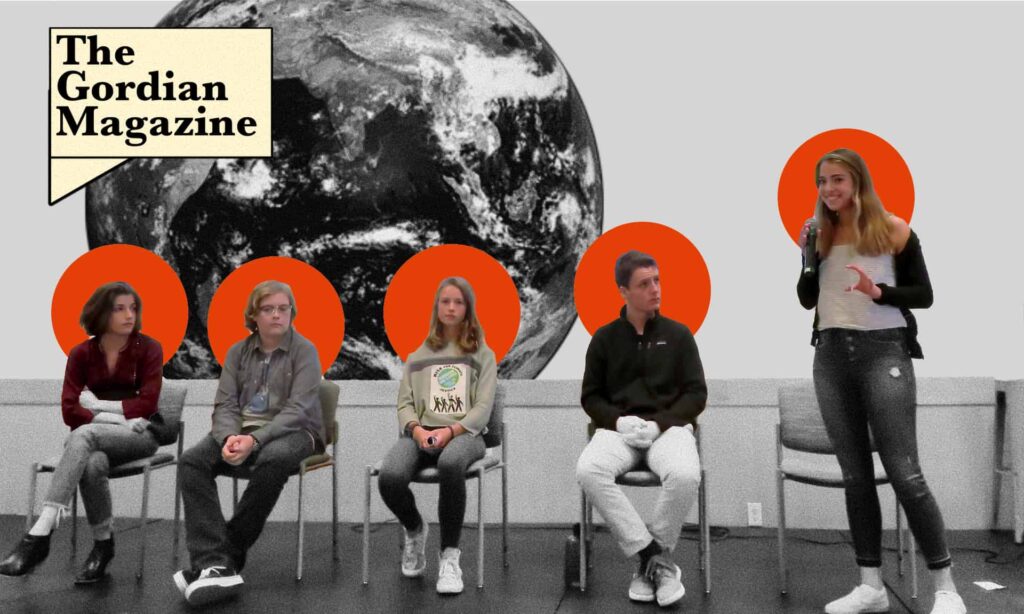
Humanity faces immense challenges
Many young people are global. Growing up online has predisposed a generation to a cosmopolitan perspective previously only accessible by the elite. Interacting with a culture different from your own has become a commonplace occurrence online, which has led many to retreat into safe, echo chambers with people of the value system. This retreat is exemplified by private chat groups which at best, provide a welcoming space for a niche community, and at worst, provide a space for terrorists to plan attacks. Yet, if you’ve grown up online, you’ll know that an echo chamber is far less fun than a debate space.
Young people, far more than their older peers, prefer to engage, debate, and learn from one another online. I witness this every day in the Young World Federalists communities and technologies like TikTok’s Duet function which promotes reacting to and replying to other users. Young people are online to engage with one another. The inherently democratic nature of youthful online interaction will be the foundation of a future global polity. A generation seeking not to confirm their beliefs with ideological compatriots but through rigorous debate with ideological counterparts is the ideal vanguard for any number of world federalist projects.
World federalists have long been occupied with the idea of a grassroots global democracy. A world parliament of the people, a global citizens assembly, and a provisional world government are ideas lauded by the movement. Technologists, almost since the moment the World Wide Web was born in 1995, have promoted the use of digital networks for democracy. There are dozens of start-ups, NGOs, and networks all working on the ideal of online global democracy. The core problem that unites them all is the network effect, as in, people will not flock to any one of these platforms to discuss problems unless other people are already there. The flip side of the issue is of course that once the network begins to grow, it grows exponentially. If world federalists are able to motivate a younger user base to jump onboard a digital democracy space and stay there, then there is a good chance that it could become the grassroots - digital - global democracy capable of ushering in a new era in global governance; one in which the people of the world as a collective unit have influence over the competitive and anarchic system of nation-states.
Young people are motivated
The human species is young. The UN estimates that in 2019, 16% of the global population was between the ages of 15 - 24 and that the “youth population in the poorest countries is projected to increase 62 percent by 2050”. Countries with a past rooted in colonial domination and a present overshadowed by its residual forms, such as the asymmetric power structure of the UN, have the most to gain in a system of democratic global governance. The ongoing explosion of global youth, particularly in the Global South, is an opportunity for the world federalist community to pivot away from older Global Northerners and towards the youth that have the most to gain from the world federalist message.
A world federation would amplify the voices of those unheard in geopolitics. It would level the proverbial playing field between those in the Global North who benefit from centuries of exploitation and extraction, with the generations of those on the receiving end of (neo)colonial abuse. As a movement of people committed to the empowerment of human rights and equality between people, world federalists must find their leaders not in the wealthy universities of the North, but in the town squares of the South. The digital era has made this task easier than ever and provides ample common ground for a movement, and humanity, to unite under a common banner of world federation.
Young people are organized
The images of young people gathering in the streets and calling on world leaders to address the climate crisis are known around the world. The youth climate movement benefits from a high understanding of the power of digital tools, clear goals, and a unity borne out of the extreme threat to livelihoods that only climate disasters can provide.
The Young World Federalists (YWF) is the youth-led NGO that runs r/GlobalTribe. We envision a sustainable, just, and peaceful world through a democratic world federation. A world run by humanity, for humanity, providing equal opportunity to all on a thriving planet. To build support for our cause, we educate the public and raise awareness, collaborate with like-minded organizations, and mobilize activists and volunteers.
You can become a member for as little as $1/month or $10/year. These dues help us with marketing and event costs and in turn, give you voting rights in the organization as well as a bunch of other benefits. You can learn more about membership on our website here. We will have a membership drive during the Week for World Parliament (more info below) which will double your money for signing up.
You can also get involved for free, of course, and if you’re interested in volunteering you can find information here. If you are interested in developing some leadership skills and want to build the movement in your local community, you can find information on how to start a chapter here.
The easiest way to help out is to signup for our newsletter and join the Discord server for updates on our upcoming events and actions. Of course, you can also follow us on social media.
Upcoming events? That’s right. The 8th Annual Week for World Parliament is starting on October 21st and there are events taking place around the world and online to fight for a world parliament with the power to distribute vaccines fairly around the world. You can find events on the website here.
There’s also an Open Letter for World Parliament which takes about 20 seconds to sign, which is a quick and easy way to show your support.
Harold Pinter: a mirror for the common people
By Alex Liberto
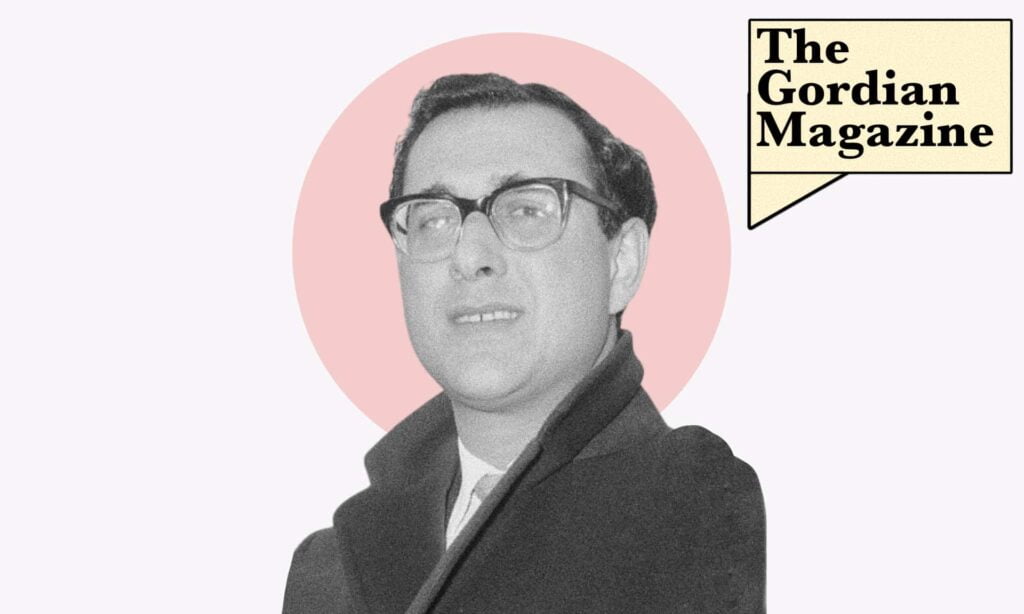
In the last issue we saw how Samuel Beckett and Harold Pinter developed a new drama that was characterized by features that had nothing in common with the prevailing criteria of the time: the Theatre of the Absurd. In this issue we shall take a closer look at Nobel Prize winner Harold Pinter, one of the most influential modern British dramatists with a writing career spanning over more than 50 years.
Style and Themes
Harold Pinter was born in Hackney, East London, in 1930. His father was a Jewish tailor who could barely make ends meet. Harold was sent to a grammar school where he remained until the age of seventeen. He then left school to undertake a career in acting. He first joined the Royal Academy of Dramatic Arts and the Central School of Speech and Drama, and subsequently became a professional actor working for the BBC and for various theatres across the United Kingdom. He adopted the stage name of David Baron and acted for a prestigious Shakespearean company. During this period he began writing his first novel, The Dwarfs, which he never completed. He also wrote various poems.
In 1957 he wrote his first play entitled The Room. Pinter wrote this one-act play in four days for the drama department of Bristol University. It was performed there in May 1957. Only in 1960 did his work achieve recognition with the production of The Caretaker. Pinter produced significant literature and also works for television and cinema until his death in 2008.
Literary Career
Pinter’s first play, The Room was about the fears and anxieties of an old woman who believed that some mysterious beings were about to deprive her of the room in which she lived. At first this play did not achieve significant success, but by 1960 Pinter’s name was on everyone’s tongue thanks to the production of The Caretaker. This very successful three-act play was about two brothers who hosted an old man in their room but eventually got rid of him. On the wake of this success the critics turned to the previous plays Pinter had published. Apart from The Room, he had staged The Birthday Party in 1958, and The Dumb Waiter in 1959. Both plays were back on stage achieving great success.
The Birthday Party is reminiscent of Kafka’s The Trial and focuses on the ruthless interrogation of an unemployed pianist by two unknown men.
The Dumb Waiter is about two professional killers, Gus and Ben, who are employed by a mysterious organization. They are sent to a basement room to wait for the order to kill someone, who they apparently both don’t know. Eventually, however, we realize that the victim in question is one of the two killers.
After the success of The Caretaker, Pinter began writing prolifically. In 1960 he staged the one-act plays A Slight Ache, A Night Out, and Night School. In 1963 he staged The Dwarfs which he had originally begun as a novel but had never finished. Between 1965 and 1970 he released four successful plays called The Homecoming (1965), Landscape (1969), Silence (1969) and The Basement (1970). In 1971 he published the full-length play Old Times, and in 1975 and 1978 he wrote about the bleak inevitability of the future with the plays: No Man’s Land and Betrayal. Pinter wrote for television and cinema. His film scripts include The Servant, Accident, The Pumpkin Eater and The Quiller Memorandum.
In 1981 Pinter achieved great success with the adaptation of The French Lieutenant’s Woman from John Fowles’s novel about Victorian passion and shame. The film starred Meryl Streep and Jeremy Irons.
Style andThemes
Pinter belongs to the Theatre of the Absurd and owes his artistic success to Beckett. However, Pinter developed his own original characteristics, creating an original and unique style. Most of Pinter’s earlier works study the themes of contrasting situations based on the known and the unknown. The “known” expresses tranquility and uncomplicated existence while the “unknown” is the threat which undermines that existence. Due to this threatening outside situation his early plays were called Comedies of Menace. As the unknown looms over the characters they become increasingly more vulnerable and disorientated. Thus, through their struggle to re-establish a safe and uncomplicated existence, Pinter dissects existential themes of loneliness, death, meaninglessness of life, communication, sexuality, and human relationships.
A typical characteristic of Pinter is his ability to describe the raw reality of life’s stereotypical repetitive nature, highlighting at the same time the sense of doom and danger that hovers overhead.
Pinter is also quite unique in his use of language. He skilfully zeroes in on the lack of rationality in man’s life through the use of language, or many a time, through the absence of language. This extreme use of silence as a tool to convey certain messages is evident in many plays. In A Slight Ache, for example, the growing tension between a husband and wife is exacerbated by the use of unbearable silence. He also uses outside effects like sudden banging or calling, to obtain that threatening feeling of doom.
The Pinteresque language is generally colloquial and repetitive and the dialogues are inarticulate and often banal. It is, however, this banality of natural speech that enhances the depth and strength of the emotional potency.
Harold Pinter’s idiosyncratic portrayal of common people, with their futile attempts at communication and their meaningless existence, represents a milestone in the history of drama.
From Michelangelo to Michelangelo: The story behind Caravaggio his “Death of the Virgin”
By Carla Pietrobatista
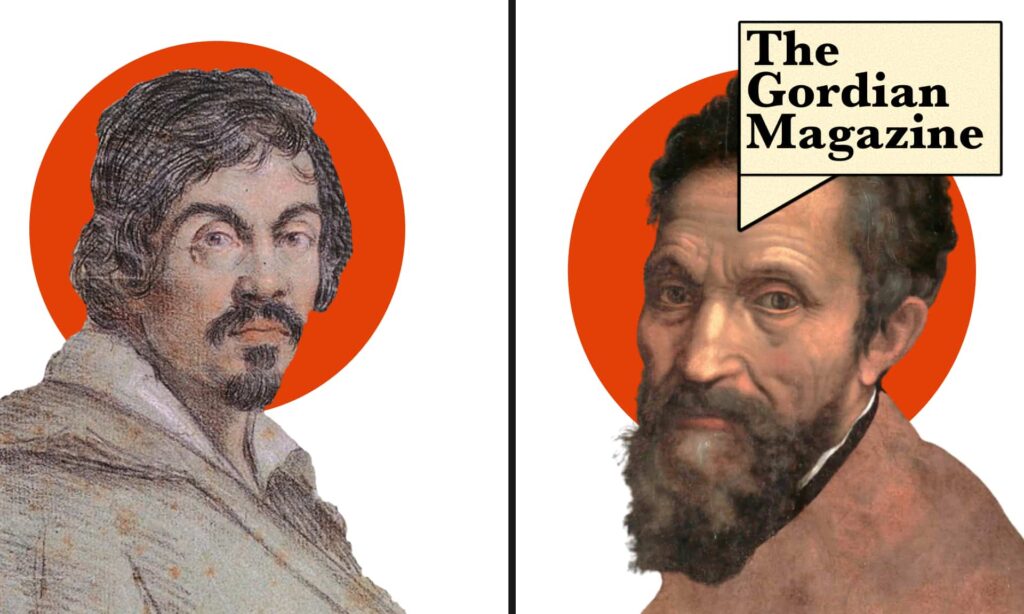
I don’t think I have yet reached my own style in writing and I don’t even think I want to reach it so as not to end up entangled in webs created by myself. I do not love to rely on chance, but do enjoy spontaneous and sudden thoughts. Precisely for this reason, following what came to my mind as soon as I delivered the last article, I decided to continue talking about freedom of expression in art, just as I had already done when talking about Michelangelo’s Pietà Rondanini.
I will continue to examine this theme by talking about another artist with the same name as the previous one: Michelangelo Merisi better known as Caravaggio (Milan: 1571 ~ although for many years it was believed that he was born in Caravaggio, Porto Ercole: 1610).
Not that Michelangelo!
Caravaggio was a man who I believe had an innate sense of freedom of expression. In fact, right from the start, he possessed a very clear and personal conception of art, which led him, regardless of personal stylistic or conceptual evolution, to overcome the artistic clichés of his period. This Michelangelo was a rebellious man, a victim of his own character, or perhaps as some recent studies also suggest, a victim of a difficult character combined with the reaction of his body to prolonged contact with the substances used to obtain his sensational colours.
Background and beheading sentence
Caravaggio’s first artistic training took place in Milan where he only rarely manifested the rougher aspects of his character, subsequently the places where he found himself living and creating works were mainly Rome, Naples, Malta and Sicily. In the very early Roman period Caravaggio achieved some success, because at the time he limited himself to painting portraits and reproductions of sacred subjects.
Over time he began to introduce revolutionary elements and colours that indeed led him to fame, but also to the inevitable scrutiny that has always accompanied innovation.
Some of his commissioned works were even rejected by clients, not only because they did not know how to interpret the artistic innovations, but also because of the controversial choice of his models. The refused works, however, were only a small part of Caravaggio’s problems, especially in Rome. In fact, it was in this city that the first violent episodes related to the painter’s excesses of anger occurred. These resulted in the very serious episode culminating in the murder of his rival, Ranuccio Tommasoni, which took place during a ball game (Jeu de paume).
The crime was said to have been provoked by the victim who was Caravaggio’s rival in love. Caravaggio was sentenced to death by beheading, which legally could have been carried out by anyone who met him on the street. The painter managed to survive only thanks to the protection of the Colonna family, especially Philip I, who after hosting him in several of his properties, managed to help him escape to Naples, Malta, and Sicily.
Once in Naples, thanks to the protection of the Colonna, he was able to create several paintings, certainly some of his best known works. Beheading scenes or severed heads, are a recurring theme, which testify to Caravaggio’s inner torment relating to his sentence.
After Caravaggio managed to reach Malta with Colonna’s help, he painted a number of works including his famous ‘Beheading of St. John the Baptist’. Here Caravaggio, thanks to his artistic merits and a series of acquaintances, managed to become a Knight of Grace, but following a quarrel with his superior he had to move again. He travelled to Sicily, where he continued to produce paintings and began to take an interest in archeology; his restless spirit led him to move back to Naples where among his various works he painted his last painting: the “Martyrdom of Saint Ursula”.
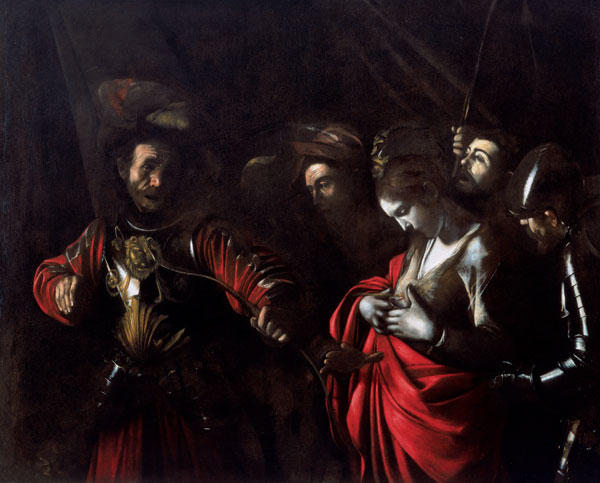
Martyrdom of Saint Ursula
When the news of a possible revocation of the death sentence arrived, Caravaggio decided to head for Rome. Even though the papal pardon was confirmed, the painter never completed his journey because he died in Porto Ercole probably due to a long-neglected intestinal infection.
I considered it useful, if not fundamental, to touch upon the history of Merisi in order to understand the inner torment of this outstanding artist who during his life sowed death (he was actually involved in two murders), while at the same time touching eternity at its best and giving us, as I said at the beginning, his particular perception of art. His having to constantly move from one place to another, always running away from something or someone, is not only the consequence of violence, but a reflection of the fury of the indomitable spirit of the painter.
The Death of the Virgin
Deciding which painting to talk about in this article was difficult because the entire Caravaggesque production leaves me speechless. My instinct, however, helped me in this endeavour and led me to choose a painting that falls within the list of works that were refused by his clients, namely, ‘The Death of the Virgin’.
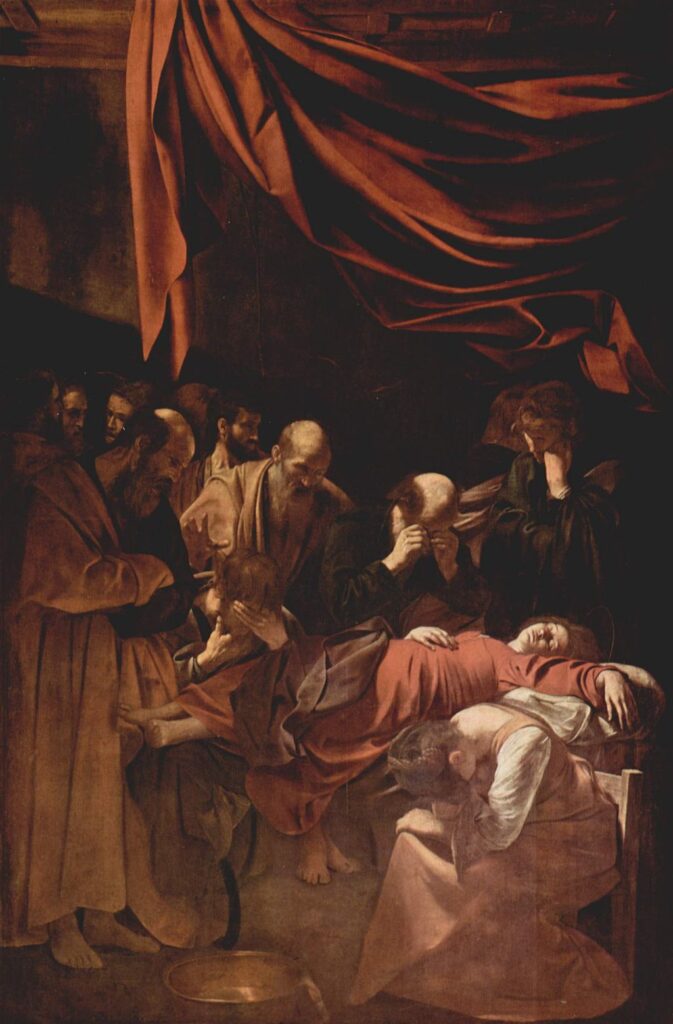
The Death of the Virgin currently exhibited in the Louvre Museum
The painting, currently exhibited at the Louvre Museum in Paris, was completed between 1604 and 1606, under commission of the jurist Laerzio Cherubini who wanted to exhibit the canvas in his private chapel in Santa Maria della Scala in Rome. Not only did Caravaggio not respect the deadlines of the contract, but he presented a work that had nothing in common with the aesthetic and iconographic canons of the other artistic works of the time.
The painting reproduces a rather humble and sparse environment, enriched only by a cardinal red cloth that is conceptually linked to the scarlet red of the Virgin’s robe.
Here the shadows, so loved by the artist, are concentrated mainly on the left and in the rear area of the canvas. Flashes of intense light frame only some of the faces of the apostles, the Virgin and Mary Magdalene, whose face is not visible because the head is folded over her legs as if to hide the tears.
The serene resignation in the face of death, typical of the sacred characters of the past, disappears completely in this atmosphere of pathos, of participation and of apostolic dismay. The biggest scandal, however, was not this interpretation of pain, which by the way already had precedents in art, but the choice of the model and the pose reserved for the Virgin.
In fact, Mary has nothing of the transcendence reserved for her. She is depicted as an ordinary person in the face of death, she sees a lifeless body, in a pose that escapes the control of the mind, abandoned by physical strength and control. The bare legs, the tousled hair, but especially the swollen belly, were undoubtedly a set of excessive elements for the taste and expectations of the times that required a forced respectability detached from human reality, rather than a plausible representation.
This death scene is not doctored; it is deeply anchored in reality.
The scene is not that of people of noble or high lineage, but of the people belonging to the same reality from which the Apostles and the Virgin came. When in Rome, Caravaggio often had the opportunity to closely observe corpses, even after several days of death. It is therefore thought that the swelling of the Virgin may be the result of this observation. Tradition has it that in the picture the corpse of a prostitute, drowned in the Tiber, was reproduced; others propose the reproduction of a pregnant prostitute. Whatever the truth may be, we cannot know.
Frankly I do not even think it is important to know. Caravaggio was not understood because he did not want to filter reality. He was not able to lie, especially in the face of death; even when it really represents a rebirth as in the case of Mary, which we must not forget was, according to the Christian tradition, taken up into heaven. The religious tribute that other artists have wanted to exult through the ephemeral idealisation of beauty, here is to be found and recognised in the profound pain of the apostles and of Mary Magdalene. It is witnessed and exalted through strong colors and the true beauty of simple things.
A look inside Kamchatka - in Pictures
By Ruby Goldenberg
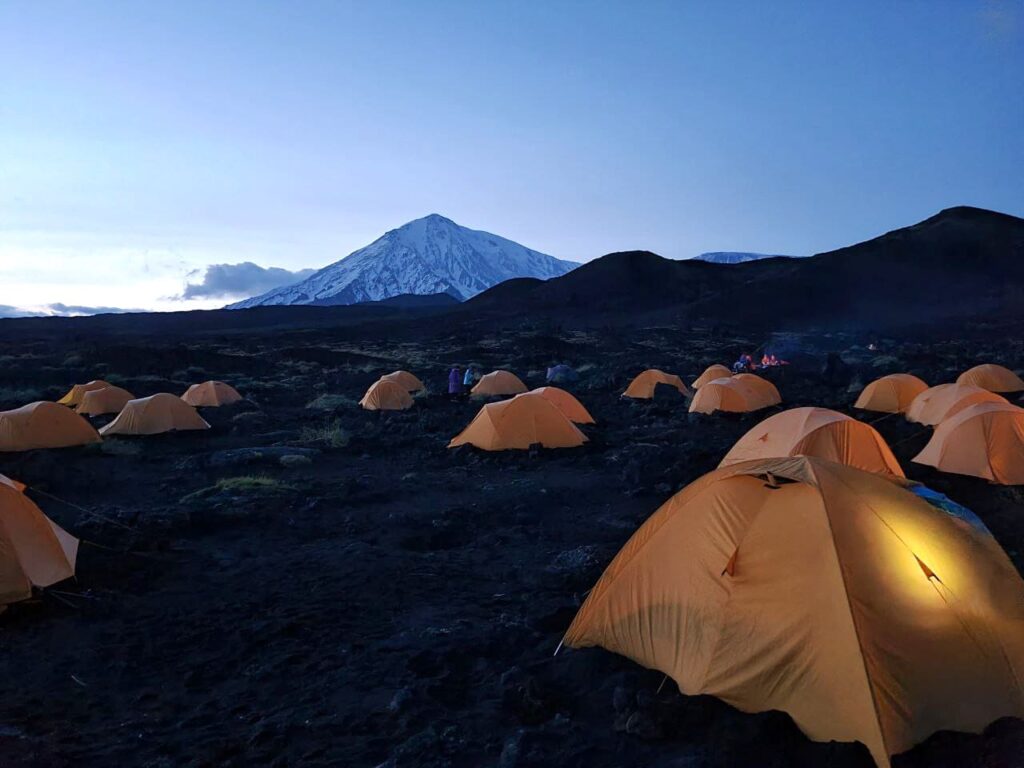
Kamchatka sits in the far east of Russia with one arm brushing past Alaska and another reaching down to Japan.
A region famous for active volcanoes and a huge population of Brown bears.
Although Kamchatka has stunning nature, the territory can be hostile and dangerous for unprepared tourists, and those who are not local should travel with a guide for their own safety.
The Underbelly of COP 26
News in October 2021 You May Have Missed
AFRICA
08.10.21: Libya. At least six refugees were shot dead by Libyan guards as they tried to leave a detention centre.
15.10.21: Nigeria. In what had been described as a “first institutional return of its kind”, Jesus College, Cambridge, has agreed to return one of the Benin bronzes that had been looted from the area during colonial times. The National Commission for Museums and Monuments will receive a bronze cockerel later this year. France has also agreed to return many of the looted bronzes.
23.10.21: Ethiopia. Government airstrikes on the Tigray region have intensified, forcing a UN plane to reverse course and abort landing. The Ethiopian authorities had been informed of the planned aid mission, but carried on their assault, regardless.
25.10.21: Sudan. The military has staged a coup and arrested the Prime Minister and other politicians, while firing on anti-coup protesters, killing at least seven and wounding scores of others.
27.10.21: Madagascar. Amnesty International issued an alert concerning the situation in the south of the country that is experiencing a climate-change-related famine due to an extended drought that could cost over a million lives.
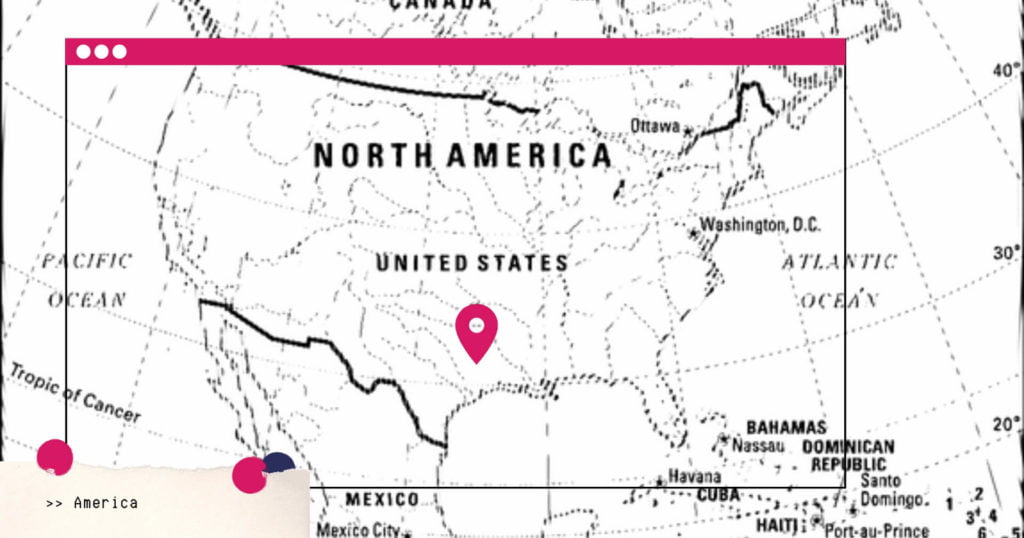
THE AMERICAS
04.10.21: USA. Facebook whistle-blower, Frances Haugen, who revealed her identity a day earlier, published a damning statement that highlighted serious issues with the company: “The company’s leadership knows how to make Facebook and Instagram safer, but won’t make the necessary changes because they have put their astronomical profits before people.”
15.10.21: USA. Former FBI Deputy Director Andrew McCabe, who was fired by Trump three years ago, only hours before his pension would have kicked in, won his case at the Justice Department and will have his pension rights restored.
16.10.21: Haiti. The violent Mawozo Gang that abducted 16 US citizens and one Canadian on Saturday has requested $1 million for each of the captives, which consist of missionaries and their children.
18.10.21: USA. Former Secretary of State Colin Powell died of COVID-19 related complications aged 84.
20.10.21: Brazil. President Jair Bolsonaro has been accused of several crimes related to his mishandling of the coronavirus pandemic, including crimes against humanity, in a draft Senate report.
22.10.21: USA. Steve Bannon, the aide to former President Trump, was declared guilty of contempt of Congress by a House vote which related to a subpoena from the committee investigating the violent storming of Capitol Hill on January 6 by Trump supporters.
25.10.21: Barbados. Sandra Mason, Barbados’s governor-general, has been elected to become the first president of the country. She will replace the U.K.’s Queen Elizabeth as head of state on November 30, the 55th anniversary of the country’s independence.
29.10.21: USA. Facebook has changed its corporate name to Meta in a move that hopes to restore confidence in the brand. Its social media platforms, however, will keep their current names.

EUROPE
01.10.21: Georgia. Former President Mikheil Saakashvili has been arrested on his return from exile having been charged in absentia with corruption.
06.10.21: Rumania. Prime Minister Florin Citu has been defeated by a vote of no confidence in parliament and will be replaced as soon as a new government is formed.
07.10.21: Poland. The Constitutional Tribunal, an arbitrary court, declared several provisions of the Treaty of the European Union inconsistent with the Polish Constitution. The move is in response to the EU’s pressure regarding the government’s human rights abuses.
10.10.21: Czechia. The party of Prime Minister Andrej Babiš has lost the parliamentary elections with 27.2 percent of the vote to the centre-right Spolu alliance by a slim 0.5 percent margin. President Miloš Zeman, who is likely to favour Babiš with the task of forming a new government, was admitted to hospital shortly after the elections.
13.10.21: Norway. A man wielding a bow and arrow killed five people and injured two others in the town of Kongsberg in what police are describing as a terrorist attack.
23.10.21: Italy. The trial of former Interior Minister, Matteo Salvini, began today: he is charged with kidnapping and dereliction of duty for having refused to let a ship carrying rescued migrants dock in Italy, leading to desperate conditions on board the ship.
27.10.21: France/UK. The row over fishing rights is escalating with France declaring a non-tolerance approach to the issue, which it blames on the UK for reneging on Brexit commitments.
28.10.21: Italy. The senate voted down and anti-homophobic violence bill.
28.01.21: Poland. The EU is fining the government €1 million a day for its controversial judicial system reforms. Poland also risks missing out on the COVID recovery fund.
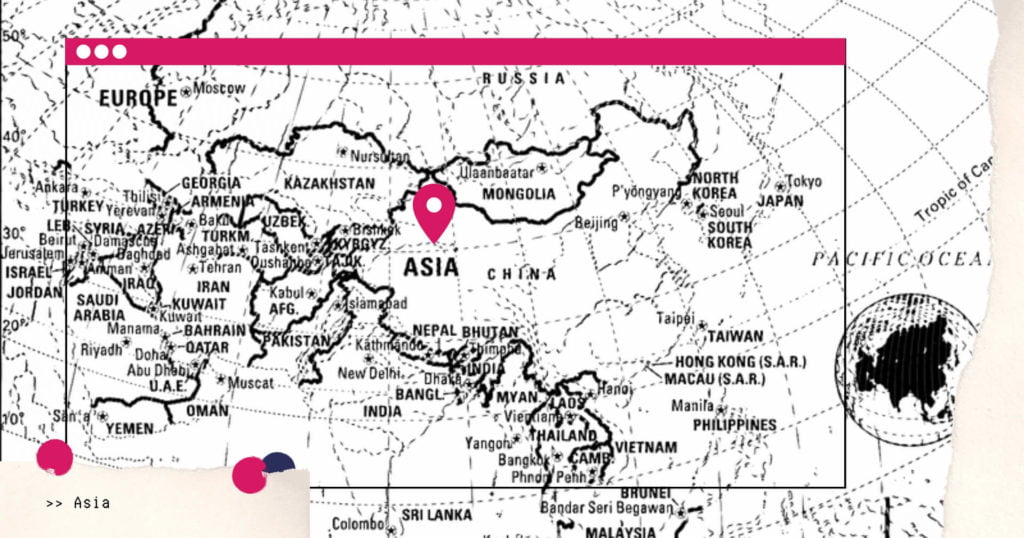
ASIA
02.10.21: Taiwan/China. A record 38 Chinese military jets flew into Taiwan’s air defence zone on Friday according to the government in Taipei .
04.10.21: Japan. Yoshihide Suga resigned with his cabinet allowing for the election of Fumio Kishida as the new prime minister.
06.10.21: Russia. Following allegations of spying, the Russian mission to NATO has been cut by half, the Secretary General Jens Stoltenberg announced.
08.10.21: Afghanistan. Scores of worshipers were killed and many others were injured in a bomb attack on a Shia mosque in the city of Kunduz.
10.10.21: Pakistan. A. Q. Khan, the nuclear scientist who was responsible for leaking documents to Pakistan allowing it to create its nuclear arsenal, has died in an Islamabad hospital aged 85. He had also passed on nuclear technology to other countries, including North Korea, Libya and Iran.
12.10.21: China. Floods in Shanxi Province have killed at least 15 people and destroyed thousands of homes.
12.10.21: Iraq. The party of Shiite cleric Muqtada al-Sadr appears to have won the most parliamentary seats following the elections that were held over the weekend.
14.10.21: Taiwan. At least 46 people have died in a fire that engulfed a building in Kaohsiung in the south of the island.
15.10.21: Afghanistan. A bomb attack on a Shia mosque during Friday prayers has killed at least 32 people and injured many others.
18.10.21: Russia. Moscow announced the recall of all Russian diplomatic personnel accredited to NATO and the closure of the Russian permanent representation.
20.10.21: Syria. A bus was blown up in the centre of Damascus killing 14 people and wounding many others.
25.10.21: Uzbekistan. President Shavkat Mirziyoyev seems set to win the elections with a landslide victory, which comes as no surprise considering the suppression of any meaningful opposition.
31.20.21: Japan. Voting for the general elections has begun today.
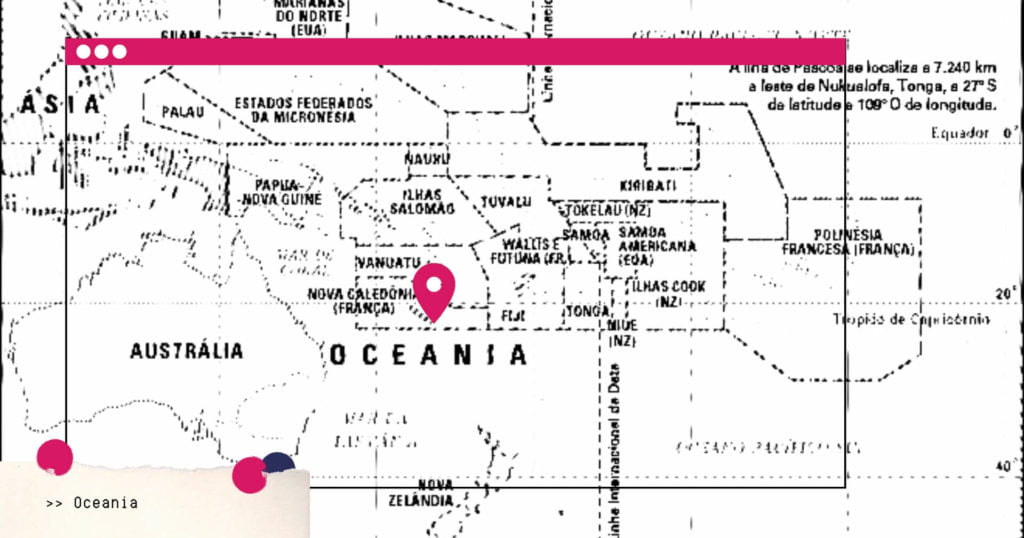
OCEANIA
29.10.21: Australia. The new strain of the Delta variant of the coronavirus has been detected today raising fears of a deterioration of an already serious situation.
WORLD
03.10.21: The publication of the Pandora Papers (covering over 11 million leaked documents) by the International Consortium of Investigative Journalists (ICIJ) has exposed secret offshore accounts of world leaders, billionaires and various celebrities.
04.10.21: The Nobel Prize for Medicine has been awarded to David Julius and Ardem Patapoutian for their “discoveries of receptors for temperature and touch,” raising questions as to why the developers of the ground-breaking mRNA vaccine came away empty-handed.
07.10.21: The Nobel Prize for Literature has gone to Tanzanian author Abdulrazak Gurnah “for his uncompromising and compassionate penetration of the effects of colonialism and the fate of the refugee in the gulf between cultures and continents.”
08.10.21: The Nobel Peace Prize was jointly awarded to two journalists:
“The Norwegian Nobel Committee has decided to award the Nobel Peace Prize for 2021 to Maria Ressa and Dmitry Muratov for their efforts to safeguard freedom of expression, which is a precondition for democracy and lasting peace. Ms Ressa and Mr Muratov are receiving the Peace Prize for their courageous fight for freedom of expression in the Philippines and Russia.”
25.10.21: Ahead of the 26th UN World Climate Conference in Glasgow, which is due to start on 31 October, a Report by the UN Environment Programme suggests that the efforts are destined to fail owing to a lack of commitment from governments across the globe that plan to produce twice as much oil, gas and coal by 2030 as Paris climate targets allow.
30.10.21: Several world leaders have congregated in Rome for the G20 summit. China’s Xi and Russia’s Putin will be attending via video link.
31.10.21: The 26th United Nations Climate Change Conference (COP26), has begun in Glasgow, Scotland, amid bleak forecasts.

